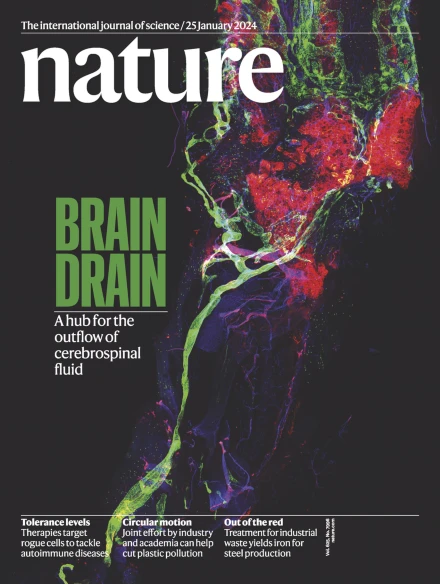微生物战争给我们带来了CRISPR。接下来会有什么重大突破?
IF 48.5
1区 综合性期刊
Q1 MULTIDISCIPLINARY SCIENCES
引用次数: 0
摘要
基因编辑和许多其他有用的生物技术工具都来自于对细菌抵御病毒入侵者的研究。但是,科学家们才刚刚开始揭开这场古老军备竞赛的秘密。本文章由计算机程序翻译,如有差异,请以英文原文为准。

Microbial warfare brought us CRISPR. What big breakthroughs could be next?
Gene editing and many other useful biotechnology tools came from studies of bacteria fighting off viral invaders. But scientists have only begun to unlock the secrets of this ancient arms race. Gene editing and many other useful biotechnology tools came from studies of bacteria fighting off viral invaders. But scientists have only begun to unlock the secrets of this ancient arms race.
求助全文
通过发布文献求助,成功后即可免费获取论文全文。
去求助
来源期刊

Nature
综合性期刊-综合性期刊
CiteScore
90.00
自引率
1.20%
发文量
3652
审稿时长
3 months
期刊介绍:
Nature is a prestigious international journal that publishes peer-reviewed research in various scientific and technological fields. The selection of articles is based on criteria such as originality, importance, interdisciplinary relevance, timeliness, accessibility, elegance, and surprising conclusions. In addition to showcasing significant scientific advances, Nature delivers rapid, authoritative, insightful news, and interpretation of current and upcoming trends impacting science, scientists, and the broader public. The journal serves a dual purpose: firstly, to promptly share noteworthy scientific advances and foster discussions among scientists, and secondly, to ensure the swift dissemination of scientific results globally, emphasizing their significance for knowledge, culture, and daily life.
 求助内容:
求助内容: 应助结果提醒方式:
应助结果提醒方式:


